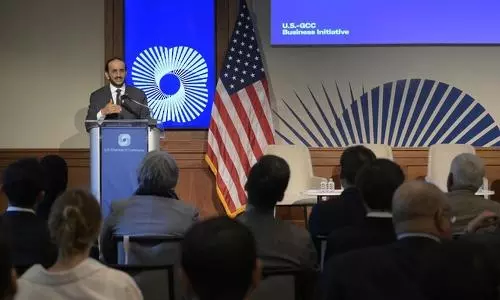
NASA's New Horizons probe transmits clearer image of Ultima Thule
text_fieldsWashington: NASA's New Horizons spacecraft has beamed back the clearest view yet of the most distant object ever explored -- the Kuiper Belt object (KBO) 2014 MU69 nicknamed Ultima Thule.
On January 1, the spacecraft zipped past the ancient Ultima Thule, setting the record for flyby of the most distant planetary object in history.
"The new image, taken during the historic flyby is the clearest view yet of this remarkable, ancient object in the far reaches of the solar system - and the first small 'KBO' ever explored by a spacecraft," NASA said in a statement.
The oblique lighting of the image reveals new topographic details -- numerous small pits up to about 0.7 km in diameter -- along the day or night boundary, or terminator, near the top.
The image also shows large circular feature, about 7 km across, and on the smaller of the two lobes appears as a deep depression.
However, it is not clear whether these pits are impact craters or features resulting from other processes, such as "collapse pits" or the ancient venting of volatile materials, NASA said.
Both lobes also show many intriguing light and dark patterns of unknown origin, which may reveal clues about how this body was assembled during the formation of the solar system 4.5 billion years ago.
One of the most striking of these is the bright "collar" separating the two lobes.
"This new image is starting to reveal differences in the geologic character of the two lobes of Ultima Thule, and is presenting us with new mysteries as well," said Principal Investigator Alan Stern, of the Southwest Research Institute in Boulder, Colorado.
"Over the next month there will be better colour and better resolution images that we hope will help unravel the many mysteries of Ultima Thule," Stern added.
The image, obtained with the wide-angle Multicolour Visible Imaging Camera (MVIC) component of New Horizons' Ralph instrument, was taken when the KBO was 6,700 km from the spacecraft, at 12.26 a.m. on January 1 -- just seven minutes before closest approach.
With an original resolution of 135 metres per pixel, the image was stored in the spacecraft's data memory and transmitted to Earth on January 18-19.
New Horizons is approximately 6.64 billion kilometres from Earth, operating normally and speeding away from the Sun (and Ultima Thule) at more than 50,700 km per hour.























